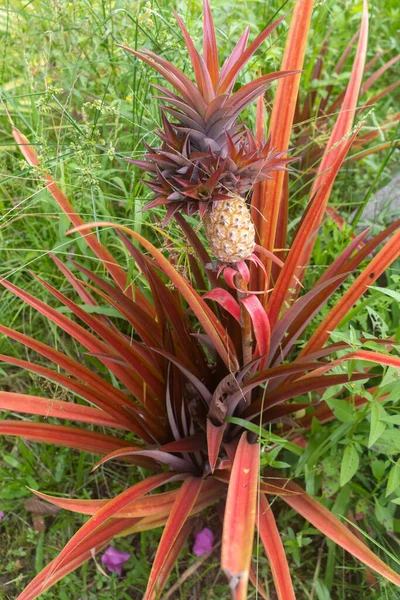Uncategorized
Unlocking the Charm of the Red Pineapple Plant — A Rare Gem for Home Gardenersby [ dave.j]
When you think of pineapples, you probably imagine tropical vacations, refreshing smoothies, or the bold centerpiece on a summer fruit tray. But nestled among the exotic plant world is a lesser-known marvel—the Red Pineapple Plant (Ananas bracteatus). With its dazzling red-hued fruit and vibrant green foliage, this plant offers more than ornamental beauty—it’s a conversation starter, a low-maintenance addition to your garden, and a symbol of tropical luxury right in your living room.Buy red pineapple plant online
What Makes the Red Pineapple So Special?Buy red pineapple plant online
Native to South America, particularly Brazil and Paraguay, the red pineapple plant is a relative of the common edible pineapple but with a twist: it produces small, vividly red pineapples that are more decorative than edible. While technically edible, they’re much more fibrous and sour than the store-bought variety, making them ideal as eye-catching accents rather than snacks.
But this plant’s allure goes beyond its fruit. The sword-like leaves, sometimes edged in pink or white depending on the cultivar, add a burst of color to any space. It’s ideal for indoor containers, patios, or as part of a tropical-themed garden bed.
How to Grow and Care for a Red Pineapple Plant
Surprisingly, the red pineapple plant is quite easy to care for—even if you’re not a seasoned gardener.
- Light: It thrives in bright, indirect sunlight. Outdoors, it prefers a partially shaded location. Indoors, place it near a window with filtered light.
- Water: Allow the soil to dry slightly between watering. Like other bromeliads, it doesn’t like soggy roots. Water directly into the rosette (the center of the plant), mimicking how it collects moisture in the wild.
- Soil: Use a well-draining potting mix, such as cactus or bromeliad soil.
- Humidity: These plants love humidity. Mist regularly if your home is dry, especially in winter.
- Temperature: They prefer warm temperatures between 65–85°F (18–29°C). Avoid frost, as it can damage the foliage.
Propagating Your Red Pineapple Plant
After flowering and fruiting, the mother plant will begin to die—but not before producing “pups” or offsets. These baby plants can be carefully separated and potted to grow a whole new generation. It’s the circle of pineapple life!
Final Thoughts
The red pineapple plant isn’t just a showpiece—it’s a small slice of the tropics, a botanical treasure that rewards minimal effort with maximum impact. Whether you’re a seasoned plant collector or a casual grower looking to try something new, this vibrant variety will bring joy, color, and a touch of the exotic to your home or garden.
If you haven’t added a red pineapple to your collection yet, now’s the perfect time. You might just fall in love with the plant that’s as bold as it is beautiful.

